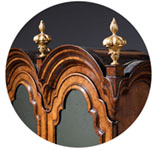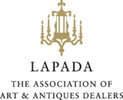The Sir William Stephenson 18th Century George II Lacquer Chinoiserie Bureau
Sold
Follow Us
The Sir William Stephenson 18th Century George II Lacquer Chinoiserie Bureau
A rare and important George II period lacquer chinoiserie bureau, exquisitely decorated with gilded chinoiserie scenes on a rich black ground. Featuring intricate depictions of figures, birds, and landscapes, this exceptional piece embodies the height of early 18th-century English craftsmanship. The fall-front reveals a beautifully fitted interior with small drawers, pigeonholes, and two secret drawers cleverly concealed within, adding to its intrigue.
This bureau bears the coat of arms of the Stephenson family, a remarkable discovery that enhances its historical significance. The Stephensons, originally from Alston in Cumbria, rose to prominence in trade and public life, with Sir William Stephenson (c.1685–1774) becoming a successful London merchant, Lord Mayor (1764–5), and a key figure in 18th-century commerce. His descendants forged influential alliances, including connections to the Sawbridge, Savile, and Erle-Drax families. A silver seal fob bearing the same arms, dated between 1725 and 1775, is held in the British Museum, likely belonging to the original owner of this bureau.
With exceptional provenance, rarity, and striking visual appeal, this bureau is a true collector’s piece. Important examples of chinoiserie furniture with such distinguished lineage and hidden compartments rarely come to market.
Additional reading
Extraordinarily, I was able to find only one direct match for Stephenson. While there are various armigerous families with that name, only one bears these particular arms, and Burke helpfully references later marriage alliances, confirming that we are indeed looking at the ‘right’ Stephensons.
The Stephensons originated as a farming family from Alston in Cumbria before branching out into trade in both Newcastle and London. More details about the family can be found in John Hodgson’s History of Northumberland (1820).
Sir William Stephenson (born after 1685), the youngest of three brothers, moved to London to seek his fortune. He became a successful hop merchant and distiller, a member of the Grocers’ Company, an Alderman in 1754, Sheriff in 1756–7, and was knighted on 8 June 1759 before serving as Lord Mayor of London in 1764–5. Despite his success, he remained connected to his roots, funding the construction of a new market cross in Alston. He passed away in 1774.
He had two daughters:
Anne Stephenson, who married John Sawbridge of Olantigh in Kent in June 1766, following the passing of his first wife, the daughter of Sir Orlando Bridgeman. Sawbridge inherited substantial estates in Kent and Middlesex, served as an MP, and later became a partner in his father-in-law’s business. Their grandson, John, married Frances Erle-Drax in 1827, heiress to Charborough House in Dorset and Ellerton Abbey in Yorkshire.
Alice Stephenson, who married her cousin, Henry Stephenson (eldest son and heir of John, the middle brother). Henry was an attorney, a member of the Middle Temple (called to the bar in 1753), and lived at East Burnham in Buckinghamshire. Their only child, Elizabeth, was born in 1762, married John Savile, second Earl of Mexborough, on 30 September 1782, and passed away in 1821. A memorial tablet in Westminster Abbey commemorates her. The Savile family seat was Methley Hall in Yorkshire.
Another notable family member was John Stephenson, son of Thomas, the eldest of the three brothers. Born in 1710, he likely moved to London under the guidance of his uncle Sir William. He took over the Horseshoe Brewery, one of London’s largest, and became a major importer of wine from Lisbon. In 1741, he married a wealthy widow, Mary Holford, and resided at Bedford Square and later Brentford Butts. He served as an MP for various constituencies from 1761 until his death in April 1794. A close associate of Robert Clive and the nabobs, he was a Director of the East India Company (1765–1768) and, during the American War of Independence, secured lucrative government contracts for provisioning troops in Newfoundland, Nova Scotia, and West Florida.
John Stephenson left his entire estate to his natural son, John Stephenson Junior, but tragedy struck soon after. On 13 November 1794, an employee at the brewery noticed John’s hat floating in a vat of beer—he had fallen into a cooling vessel and drowned.
Interestingly, there is a silver seal fob bearing these arms and crest in the British Museum, dated between 1725 and 1775. It most likely belonged to the original owner of the bureau.
Condition
Good. Wear consistent with age and use. Minor conservations in line with age and use. Remarkably, all decoration, hardware, locks and feet are original. It should be noted that the piece is in remarkable condition!
Dimensions
Height: 40.25 in (102.24 cm)
Width: 38 in (96.52 cm)
Depth: 21.5 in (54.61 cm)
PREVIOUSLY SOLD
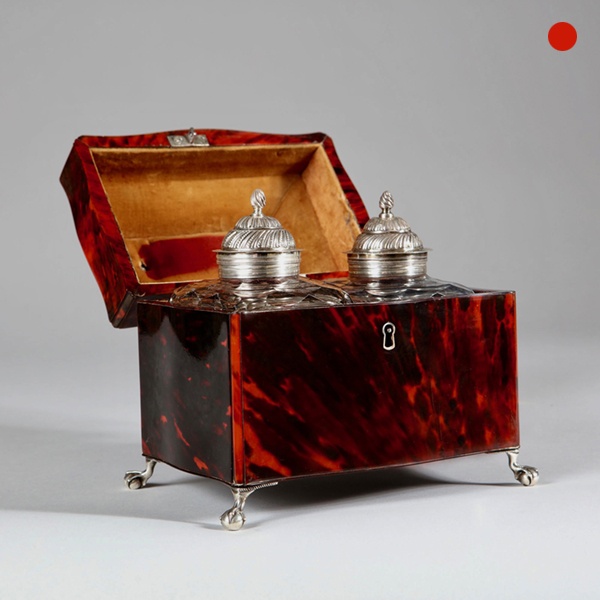
George III Red Tortoiseshell Tea Caddy
A rare exquisitely shaped red tortoiseshell tea caddy, serpentine to all four faces with a pagoda top. The beautifully worked silver handle depicts the Prince of Wales feathers and it is raised on fine ball and claw feet of silver.
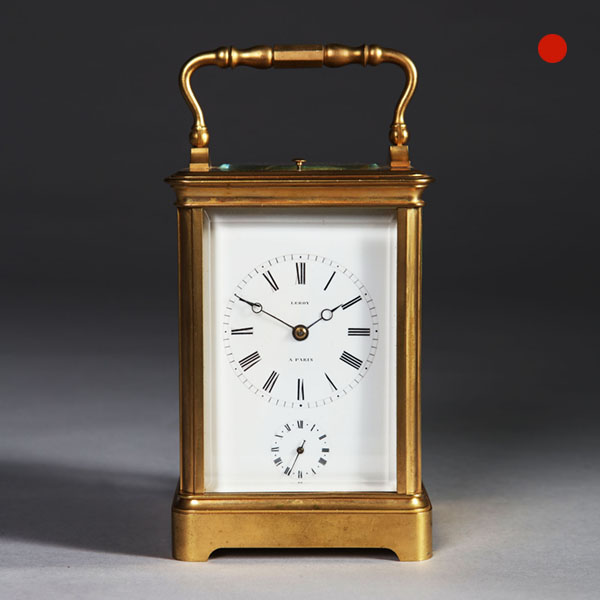
19th-Century Quarter-striking Carriage Clock by Leroy, Paris
The gilt-brass, so-called corniche case has bevelled glass panels on all sides so that the movement is entirely visible. It is surmounted by a shaped carrying handle. The white enamel dial has a Roman chapter ring, with Arabic five-minute and minute divisions.
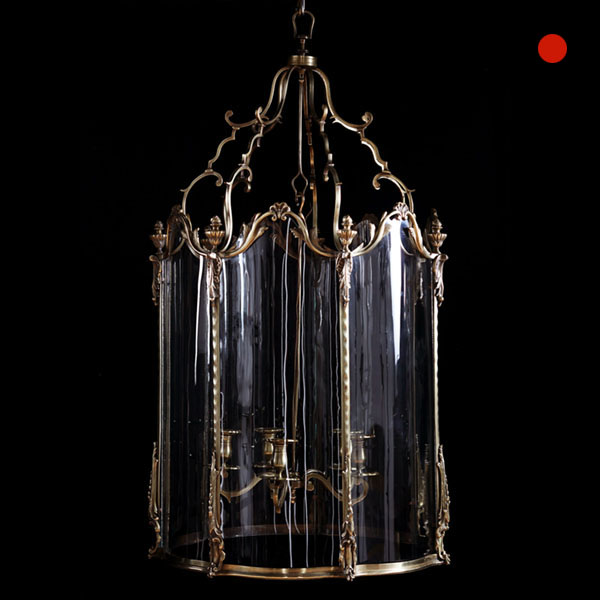
Louis XV Style French Lantern
A superb large French brass lantern of Louis XV style, 19th century. The five light chandelier within a cylindrical lantern cast with scrolling acanthus, shells and vase-shaped finials with serpentine glazed panels, fitted for electricity.
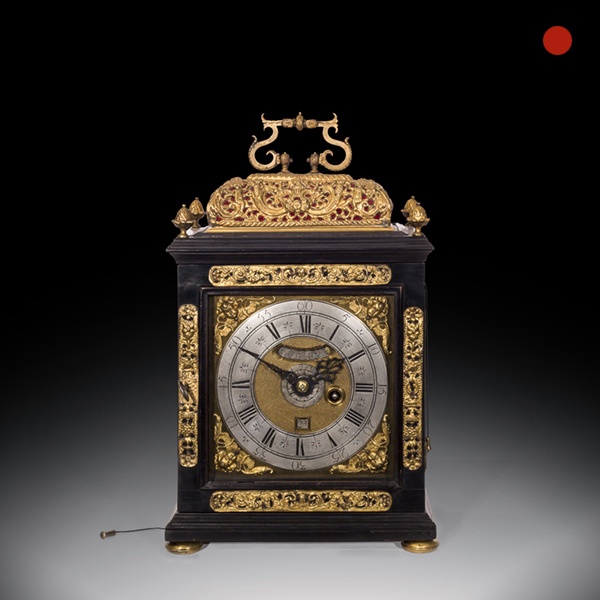
17th-Century Ebony Veneered Table Clock with Alarm and Pull Quarter Repeat
A magnificent sprung driven table clock by respected London maker George Etherington. The late 17th century, ebony- veneered table clock with alarm and pull quarter repeat on two bells, signed on the chapter ring Etherington London, and on the backplate Geo Etherington LONDON, c. 1695-1700.
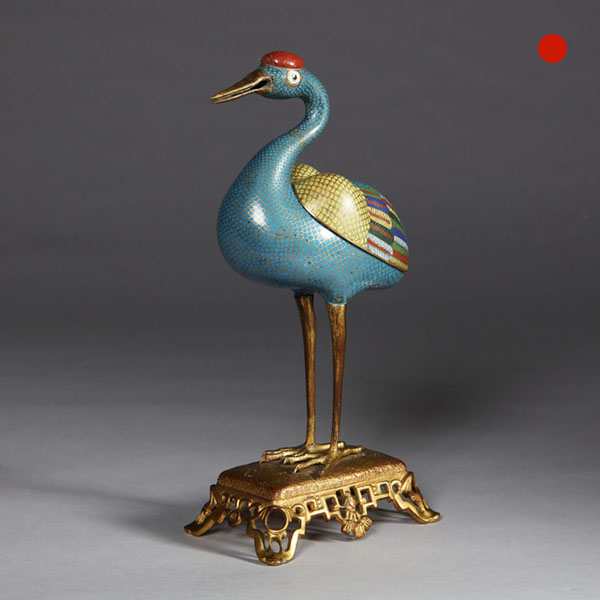
Chinese Cloisonne Enamel Censer Modelled as a Crane 18/19th Century Qing Dynasty
The characterful and charming 18/19th-century cloisonne enamel censer, is modelled as a crane with straight gilt-metal legs, realistically detailed feet and claws, standing on a detailed gilt base. The neck gracefully curved above the plump hollow body brightly enamelled in turquoise.
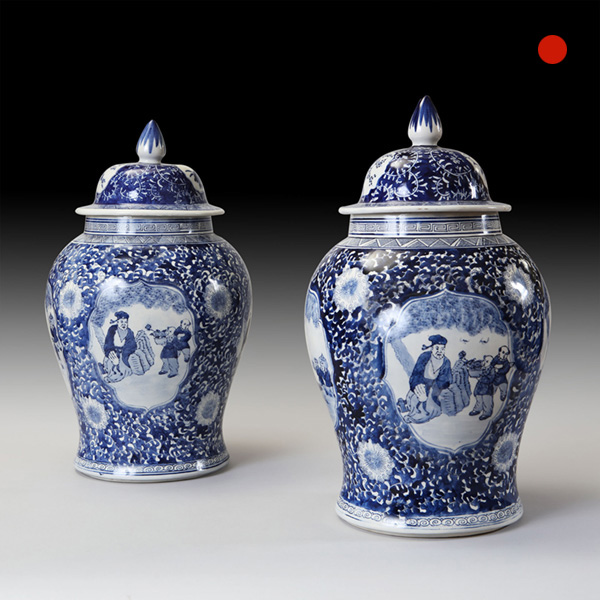
Large Pair of Blue and White Baluster Vases and Covers
Each jar is decorated with four reserves on a ground of scrolling flowers. The domed covers are surmounted by a finial. LATE QING DYNASTY (1644-1911).

George III Red Tortoiseshell Tea Caddy
A rare exquisitely shaped red tortoiseshell tea caddy, serpentine to all four faces with a pagoda top. The beautifully worked silver handle depicts the Prince of Wales feathers and it is raised on fine ball and claw feet of silver.

19th-Century Quarter-striking Carriage Clock by Leroy, Paris
The gilt-brass, so-called corniche case has bevelled glass panels on all sides so that the movement is entirely visible. It is surmounted by a shaped carrying handle. The white enamel dial has a Roman chapter ring, with Arabic five-minute and minute divisions.

Louis XV Style French Lantern
A superb large French brass lantern of Louis XV style, 19th century. The five light chandelier within a cylindrical lantern cast with scrolling acanthus, shells and vase-shaped finials with serpentine glazed panels, fitted for electricity.

17th-Century Ebony Veneered Table Clock with Alarm and Pull Quarter Repeat
A magnificent sprung driven table clock by respected London maker George Etherington. The late 17th century, ebony- veneered table clock with alarm and pull quarter repeat on two bells, signed on the chapter ring Etherington London, and on the backplate Geo Etherington LONDON, c. 1695-1700.

Chinese Cloisonne Enamel Censer Modelled as a Crane 18/19th Century Qing Dynasty
The characterful and charming 18/19th-century cloisonne enamel censer, is modelled as a crane with straight gilt-metal legs, realistically detailed feet and claws, standing on a detailed gilt base. The neck gracefully curved above the plump hollow body brightly enamelled in turquoise.

Large Pair of Blue and White Baluster Vases and Covers
Each jar is decorated with four reserves on a ground of scrolling flowers. The domed covers are surmounted by a finial. LATE QING DYNASTY (1644-1911).
YOU MAY ALSO LIKE
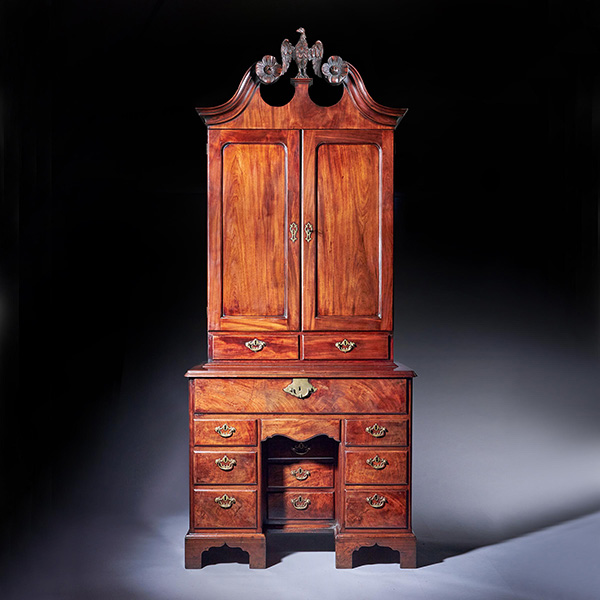
A George II Irish Mahogany Secretaire Kneehole Bookcase Att. C. Hearn
A George II Irish Mahogany Secretaire Kneehole Bookcase Att. C. Hearn £45,900Follow UsA George II Irish Mahogany Secretaire Kneehole Bookcase Att. C. Hearn An original and rare two-part George II 18th century Irish architects figured mahogany...
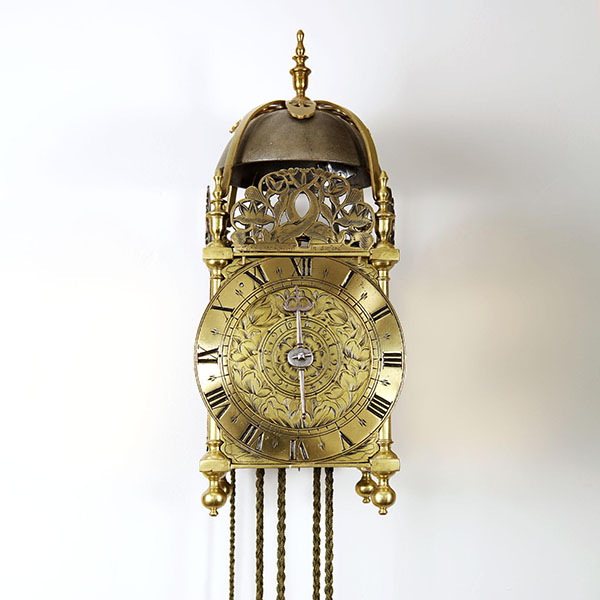
17th Century Lantern Alarm Clock by Johannes Quelch, Oxford
17th Century Lantern Alarm Clock by Johannes Quelch, Oxford £14,000Follow Us17th Century Lantern Alarm Clock by Johannes Quelch, Oxford An English 17th century lantern clock made of brass and iron, circa 1665-1670. The clock consists of going...
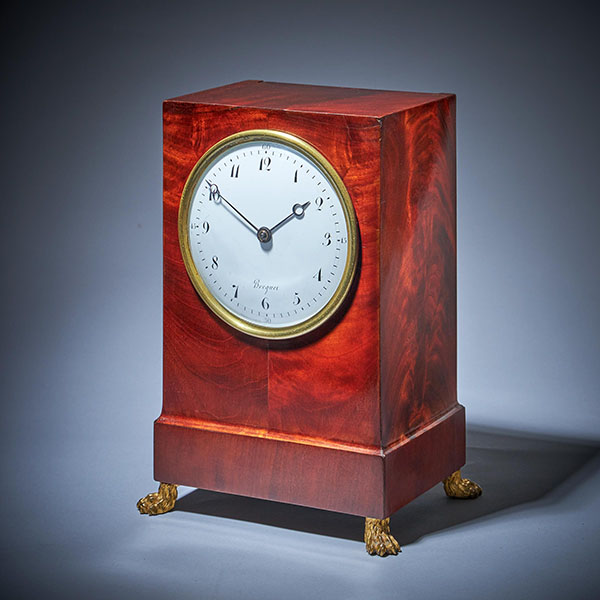
19th-Century Flame Mahogany Mantel Clock by BREGUET Raised by Lion Paw Feet
19th-Century Flame Mahogany Mantel Clock by BREGUET Raised by Lion Paw Feet £23,500Follow Us19th-Century Flame Mahogany Mantel Clock by BREGUET Raised by Lion Paw Feet EXTREMELY RARE MANTEL CLOCK WITH A FIGURED MAHOGANY-VENEERED CASE by A-L...
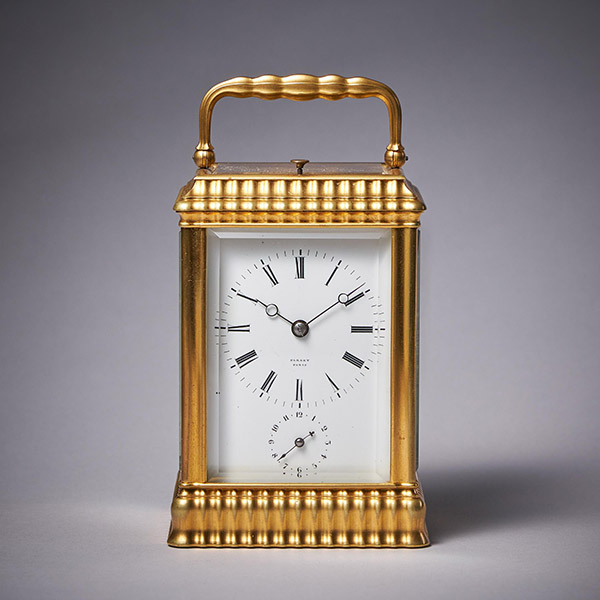
Unusual Ribbed Eight-Day Repeating Striking Gilt-Brass Gorge Case Carriage Clock
Unusual Ribbed Eight-Day Repeating Striking Gilt-Brass Gorge Case Carriage Clock £4,850Follow UsUnusual Ribbed Eight-Day Repeating Striking Gilt-Brass Gorge Case Carriage Clock CaseThe clock has a gilt-brass case which is a variation on the...
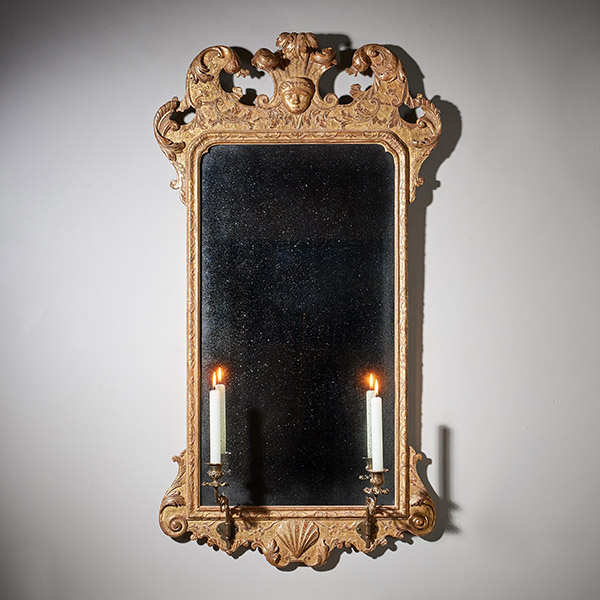
Fine 18th Century George I Gilt Gesso Pier or Console Mirror, Manner of Belchier
Fine 18th Century George I Gilt Gesso Pier or Console Mirror, Manner of Belchier £13,900Follow UsFine 18th Century George I Gilt Gesso Pier or Console Mirror, Manner of Belchier A fine and rare early 18th century George I Gilt Gesso pier or...
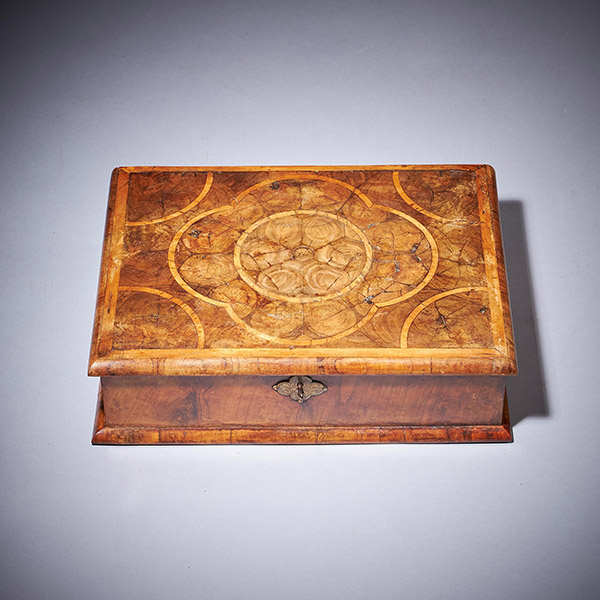
17th Century William and Mary Olive Oyster Lace Box, Circa 1680-1700
17th Century William and Mary Olive Oyster Lace Box, Circa 1680-1700 £3,900Follow Us17th Century William and Mary Olive Oyster Lace Box, Circa 1680-1700 A fine and rare 17th-century William and Mary period olive oyster lace box of perfect...

A George II Irish Mahogany Secretaire Kneehole Bookcase Att. C. Hearn
A George II Irish Mahogany Secretaire Kneehole Bookcase Att. C. Hearn £45,900Follow UsA George II Irish Mahogany Secretaire Kneehole Bookcase Att. C. Hearn An original and rare two-part George II 18th century Irish architects figured mahogany...

17th Century Lantern Alarm Clock by Johannes Quelch, Oxford
17th Century Lantern Alarm Clock by Johannes Quelch, Oxford £14,000Follow Us17th Century Lantern Alarm Clock by Johannes Quelch, Oxford An English 17th century lantern clock made of brass and iron, circa 1665-1670. The clock consists of going...

19th-Century Flame Mahogany Mantel Clock by BREGUET Raised by Lion Paw Feet
19th-Century Flame Mahogany Mantel Clock by BREGUET Raised by Lion Paw Feet £23,500Follow Us19th-Century Flame Mahogany Mantel Clock by BREGUET Raised by Lion Paw Feet EXTREMELY RARE MANTEL CLOCK WITH A FIGURED MAHOGANY-VENEERED CASE by A-L...

Unusual Ribbed Eight-Day Repeating Striking Gilt-Brass Gorge Case Carriage Clock
Unusual Ribbed Eight-Day Repeating Striking Gilt-Brass Gorge Case Carriage Clock £4,850Follow UsUnusual Ribbed Eight-Day Repeating Striking Gilt-Brass Gorge Case Carriage Clock CaseThe clock has a gilt-brass case which is a variation on the...

Fine 18th Century George I Gilt Gesso Pier or Console Mirror, Manner of Belchier
Fine 18th Century George I Gilt Gesso Pier or Console Mirror, Manner of Belchier £13,900Follow UsFine 18th Century George I Gilt Gesso Pier or Console Mirror, Manner of Belchier A fine and rare early 18th century George I Gilt Gesso pier or...

17th Century William and Mary Olive Oyster Lace Box, Circa 1680-1700
17th Century William and Mary Olive Oyster Lace Box, Circa 1680-1700 £3,900Follow Us17th Century William and Mary Olive Oyster Lace Box, Circa 1680-1700 A fine and rare 17th-century William and Mary period olive oyster lace box of perfect...
